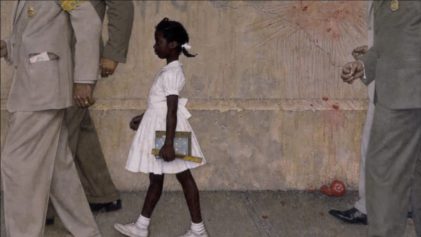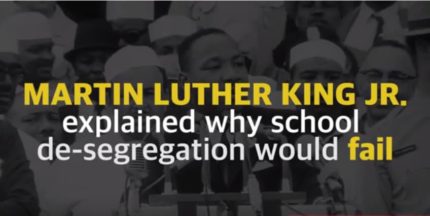
The Dallas school district’s student population is over 90 percent Black and Latino. (Photo by Hero Images/Getty Images)
For decades, schools across America remained separated by race, guaranteeing well-to-do white students a quality education while nonwhite students were remanded to second-rate learning institutions. Not much has changed since the Supreme Court’s momentous Brown v. Board of Education decision, however, as U.S. schools are more segregated now than they were in the late 1960s.
Education leaders in Dallas, Texas, are now looking to turn things around by spearheading a renewed effort to encourage students of all racial and economic backgrounds to willingly go to school together, according to The New York Times. The city had a tough time integrating in the early 1970s, spurring white flight to the suburbs and increased enrollment in private schools. Essentially, one form of segregation was replaced with another.
Two years ago, Dallas schools set a goal of opening over 20 new schools by 2020 in hopes of reversing enrollment declines and enticing affluent, white families to consider the city’s public education system, the newspaper reported. Many of the schools have their eyes on a specific group, too: nearly half of their seats have been set aside for students from middle- or high-income families. Other seats are reserved for students who live outside the district.
“Every major city in America has to find a way to deal with this issue,” Dallas school superintendent Michael Hinojosa said. “When you have a mix of kids, the affluent kids don’t suffer and the children of intergenerational poverty do better.”
The New York Times reported that Dallas is just one of a few U.S. cities in testing out new and ambitious integration programs. For instance, New York City is taking a traditional approach to diversify its schools by promising to lessen the number of learning institutions where low-income students are isolated from their more-affluent peers.
School districts nationwide might not be so lucky, however, as President Donald Trump’s administration in March announced plans to gut a grant program for districts looking to diversify their student populations. Recent research from the Government Accountability Office found that the percentage of all schools with racial and/or socioeconomic isolation grew from 9 percent to 16 percent between the 2000-2001 and 2013-2014 school years.
To combat this issue, a handful of cities have gone the route of establishing so-called “innovation schools,” which make local schools more attractive to families by offering Advanced Placement-like programs. Another, more expensive, strategy has been the creation of “transformation schools” that admit students by lottery, not admissions standards. This helps prevent schools from turning into a hotbed for high-income white students or low-income nonwhite students.
“What’s exciting about what Dallas is doing is you have a district that’s 90-percent low income,” Richard Kahlenberg, an expert on school segregation at New York-based think tank the Century Foundation. “So, many people look at that and say, ‘Therefore, we can’t integrate.’ [But] that’s not right.
“You can begin with a small subset of schools and try over time to build the reputation of the school district among middle-class people.”
Joyce Foreman, a school board member who represents the working class in Southwest Dallas agreed, adding that the push for integration and improved schools would help her constituents by giving them more options for education. She warned, however, that the expansion of such programs could negatively impact older schools that mainly serve low-income students.
“I’m looking at the number of students per nurse or counselor” at traditional schools, Foreman told The New York Times. “We want to make sure we don’t oversaturate ourselves with choices.”
Hinojosa acknowledged that some middle-class white families still have their reservations about enrolling their children in the city’s largely nonwhite schools but said he hopes the district’s recent efforts will soon change their minds.
The superintendent has taken a realist approach to the issue as well, concluding, “If parents can’t get over race or class, they’re not going to put their kids in our schools.”


